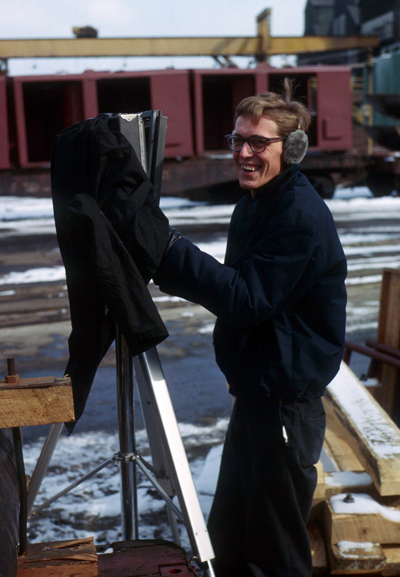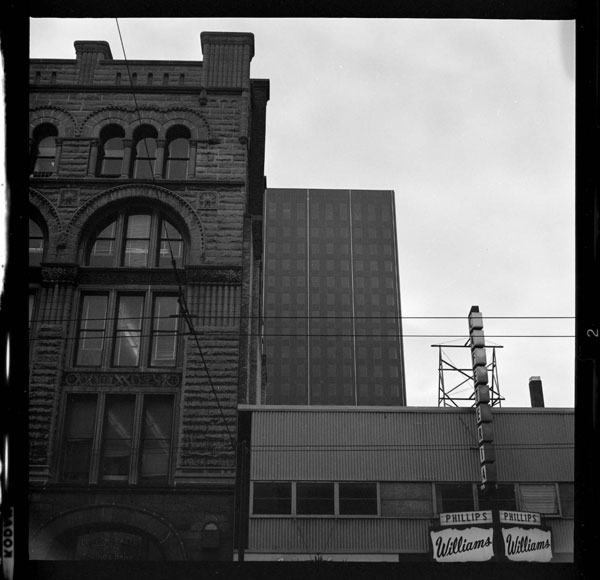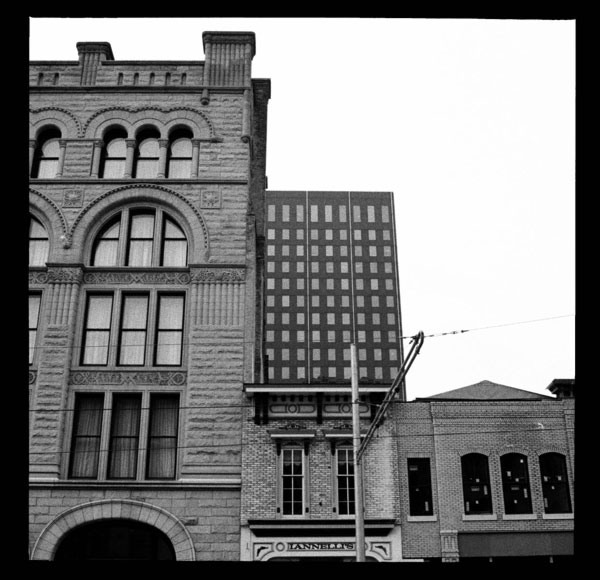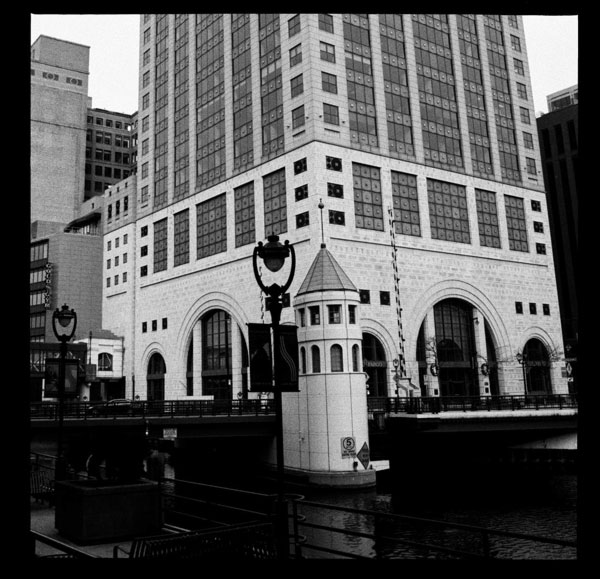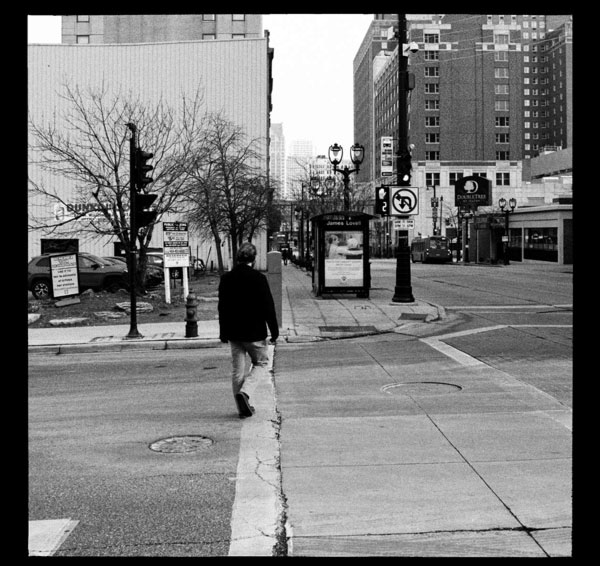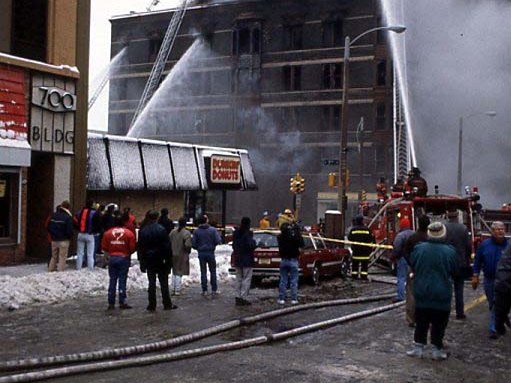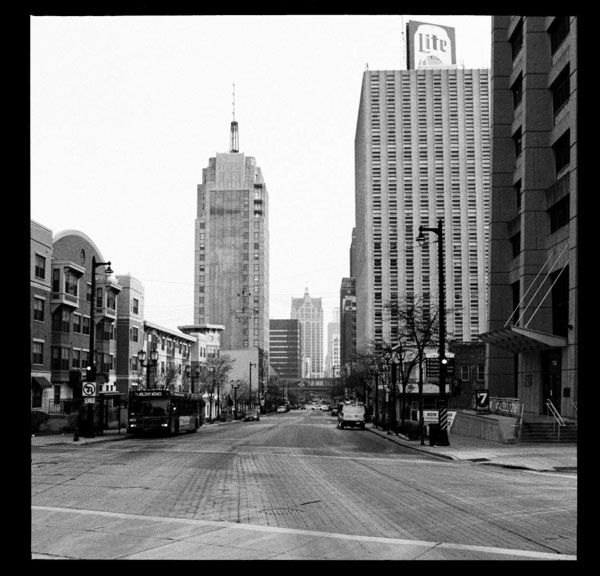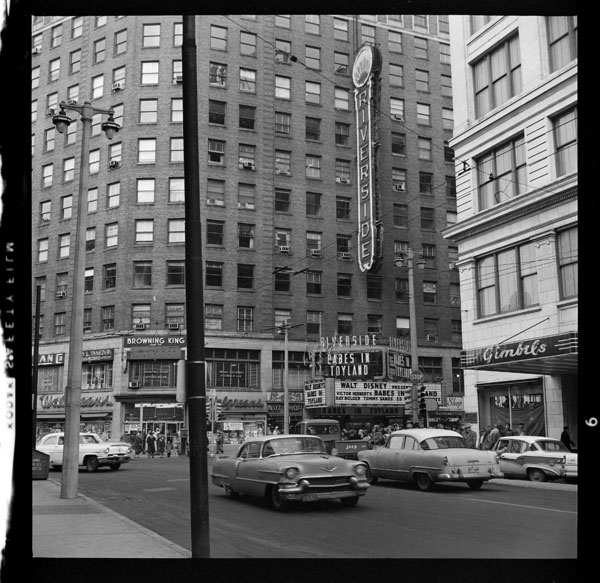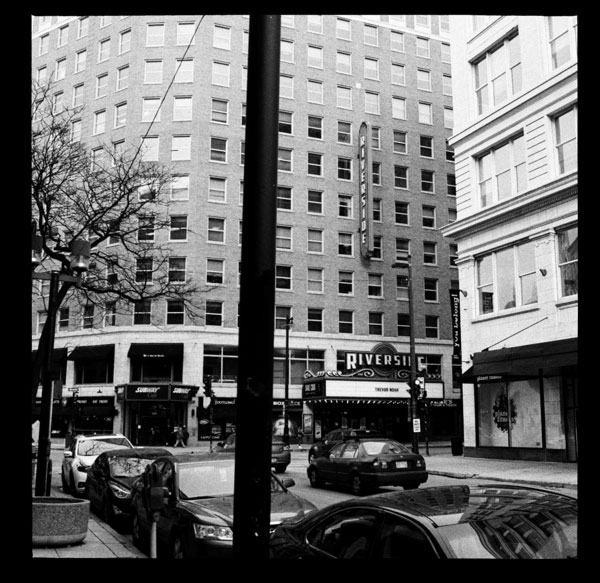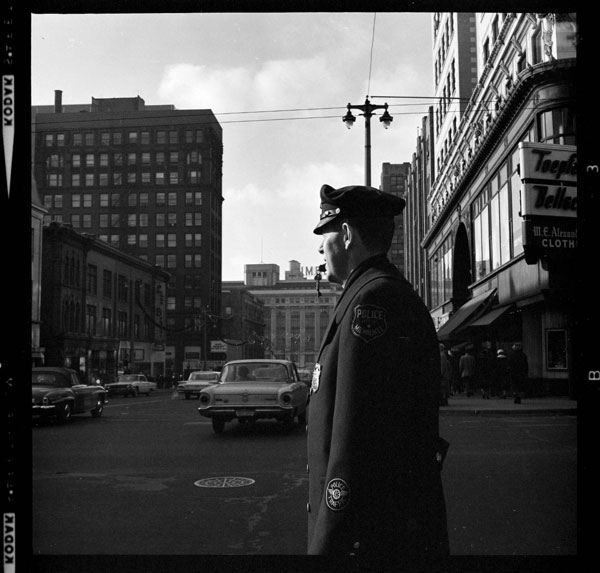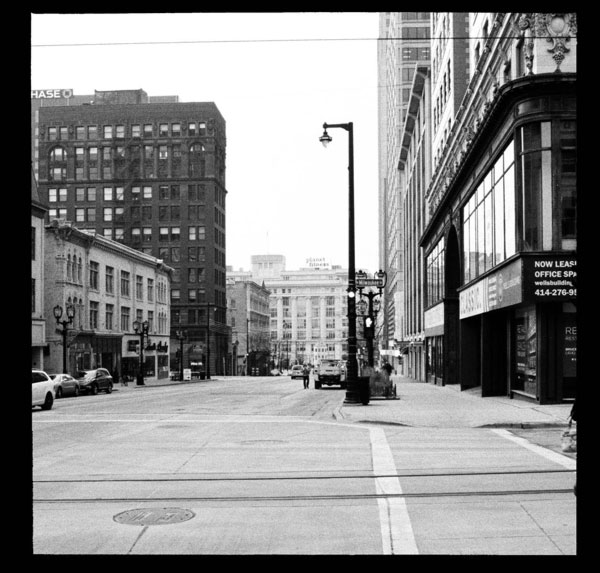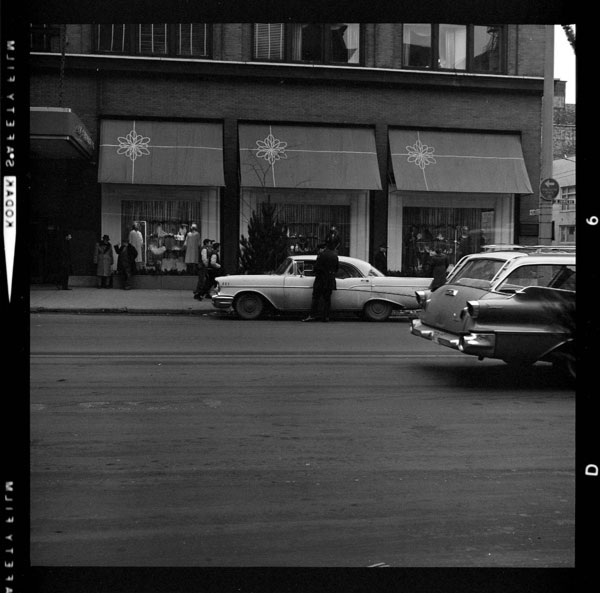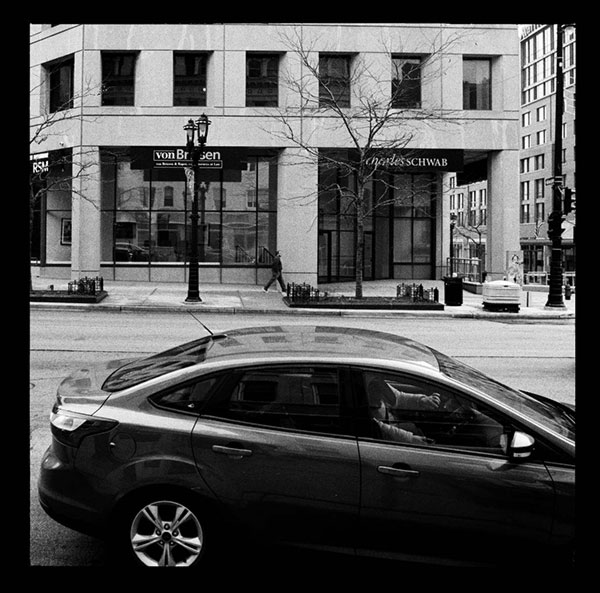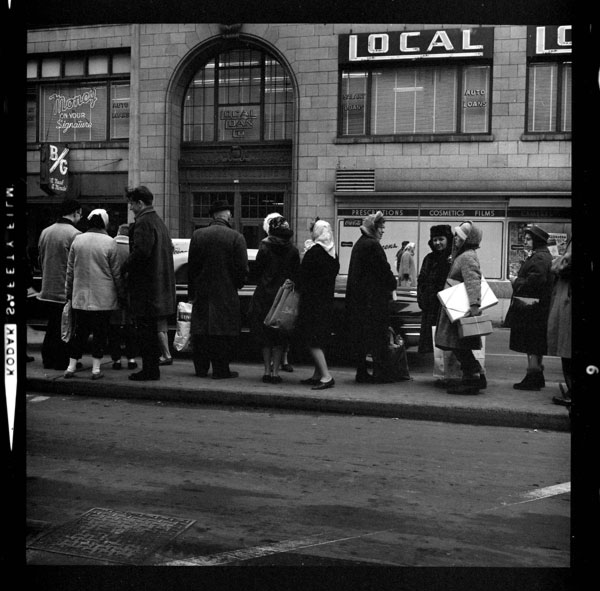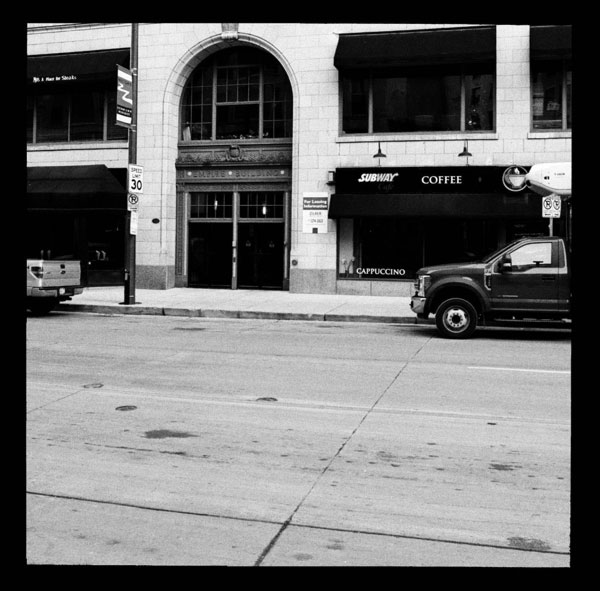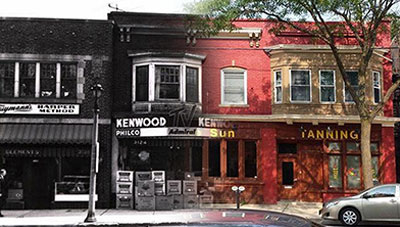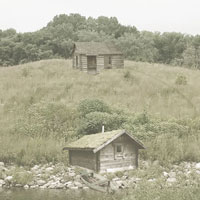Recently, we posted some then-and-now pairs of photographs collected and shot by Old Milwaukee Facebook group moderator Adam Levin, which showed how the city has changed over the years.
In this second installment, we take a little different tack. Returning to the incredible monochromatic images taken by Les Pacholski in the early 1960s, we present a series of the late photographer’s images of Milwaukee paired with photographs of the same views made by his son Luke in recent weeks.
These pairs not only capture a changing Milwaukee – while revealing what has also gone unchanged – but has allowed two generations of a photography family to, in some small way, reconnect.
The elder Pacholski, who studied at the Layton School of Art, died in 2015 at the age of 72.
"When I first saw my dad's book, ‘Act One,’ back in April," says the younger Pacholski, "I was fascinated by the photos, but in a sense they existed in a vacuum. The book does not have captions, and the photos don't seem to be presented in any particular order, other than presumably what my dad felt was aesthetically pleasing.
"Having grown up in Racine, Milwaukee wasn't foreign to me, but I hadn't grown up here, and I certainly wasn't around when the photos were taken, so the locations of most of the photos were complete mysteries."
Pacholski found the negatives in his mom’s house a few weeks later and after a few months had passed, he began to sift through them.
"It was at that point that more context emerged," he says. "The negatives were higher quality, offering details like the headlines on newspapers, and because they were in strips of three or four, I was able to not only start piecing together the path my dad took while walking around, but identify locations that would have otherwise been a mystery.
"Between the exposure numbers on the negatives, the way the negatives fit together – just like a jigsaw puzzle – and matching locations and details in the photos, I was able to reassemble not only the rolls of film my dad took, but the sequence of several of the rolls.
"At least five rolls were taken during a walk on the day after Christmas, 1961, that took my dad from 10th and Wisconsin all the way east to Jackson. As I became more familiar with the locations in the photos and the path my dad took, I thought it would be interesting to retrace his footsteps and replicate his photos as closely as possible."
So, Pacholski hit the streets with his camera.
"Some locations look almost the same as they did 57 years ago," the younger Pacholski says, "at least from an architectural standpoint, but others are completely unrecognizable today. One example is a shot my dad took of 5th Street; not only are all of the buildings gone today, 5th Street itself no longer exists there. In its place is the Wisconsin Center."
Pacholski says finding the right spot from which to shoot wasn’t a big problem, but he faced other issues.
"In most cases, getting a photo from the same approximate location wasn't hard, but matching the shots exactly was tough. My dad was apparently using a twin-lens reflex camera with a waist-level finder and I was using an SLR with an eye-level finder, which meant matching the perspectives exactly required bending down or even laying on the ground. Sometimes it was possible to line up certain points in his photos, but then other points didn't line up. Was he closer or farther away? Higher or lower? In the end, I often settled for ‘good enough,’ which still ended up being really close."
Pacholski points out that his photos and his father’s may look similar, but they derive from different impulses, different intents.
"Trying to exactly replicate photos exactly over a half century after the fact is an entirely different thought process than taking them originally," says Luke. "While I have no doubt my dad was careful in composing his photos, he was doing so from an artistic standpoint. What I ended up doing was almost purely analytical.
"While I find the comparisons in architecture striking, perhaps even more interesting is how different the city feels. At the time my dad took his photos, Downtown was a shopping center and was bustling with activity. Today things are far different. By no means dead, but arguably lacking a certain energy that is visible in his photos. One wonders what the next half century will bring."
Here are the image sets, with descriptions written by Luke Pacholski.
Broadway between Michigan and Wisconsin, looking west
In 1961, the Commonwealth Mutual Savings Bank (623 N. Broadway) is to the left, Phillip’s Cafeteria (629 N. Broadway) is to the right, and Marine Plaza (111 E. Wisconsin Ave.) can be seen in the background. Today, Marine Plaza is now Chase Tower.
Riverwalk south of Wisconsin Avenue, looking northeast
In 1961, the Pabst Building is straight ahead at 108 E Wisconsin Ave. To its left is Marshall & Ilsley Bank at 721 N. Water St. and in the upper left is the First Wisconsin Building at 735 N. Water St. Today, 735 N. Water is still standing (a First Wisconsin sign can still barely be seen), but the M&I and Pabst buildings have been torn down, replaced in 1989 by the 100 East Wisconsin building.
Looking east at the northwest corner of 7th and Wisconsin
Margo's Flowers is across the street at 638 W. Wisconsin Ave., while the Schroeder Hotel can be seen down the block on the right.
A tragic fire destroyed the Norman Apartments (the building with the flower shop) in 1991, an addition was added to the (now Hilton City Center) hotel and the parking lot at the southwest corner of 6th and Wisconsin has been developed.
Looking east from the median at 8th and Wisconsin
In 1961, a large billboard on the side of the Wisconsin Tower touts the speed in converting to gas heat. Today, the Wisconsin Tower remains, as does building at the southwest corner of 7th and Wisconsin, but otherwise nearly everything from 1961 has been replaced.
Looking northeast to the corner of Plankinton and Wisconsin
In 1961, the Riverside Theatre was showing Babes in Toyland, there’s a Walgreens on the corner (one of three within five blocks), and Gimbels department store is on the right. Today, the Riverside remains (the marquee reveals Trevor Noah is playing a show), but a Subway has replaced Walgreens and Planet Fitness is in the Gimbels building.
Northeast corner of Milwaukee and Wisconsin, looking west
In 1961, Gimbels is straight ahead across the river, and the Wells Building is to the right. Today, there are some new buildings on the north side of the street on either side of Broadway, and the businesses have changed, but all in all the scene is fairly similar today.
Looking south at the corner of Milwaukee and Wisconsin
Looking south at the corner of Milwaukee and Wisconsin at T. A. Chapman Co. department store, 407 E. Wisconsin Ave. The building was demolished in 1982. The 411 East Wisconsin Center was built in 1985.
Empire Building, 710 N. Plankinton Ave.
In 1961, you could see the B/G restaurant at 712 N. Plankinton Ave. ("A Meal A Minute"), Local Loan Co. ("Money On Your Signature"), and Walgreens on the corner of Plankinton and Wisconsin (124 W. Wisconsin Ave.). To the left, out of frame, was the Empire Lounge at 716 N. Plankinton. Today, Mo’s…A Place for Steaks now inhabits the former B/G and Empire Lounge spaces, while Subway occupies the former Walgreens location.
